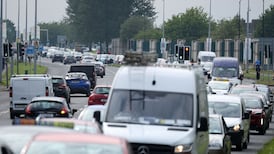The Blood Transfusion Service Board was misguided in believing it could ever produce enough blood products to meet the needs of the haemophiliac community in the Republic, the tribunal heard yesterday.
Dr Emer Lawlor, the deputy national medical director of the BTSB, said the cost of building a plant to produce home-made clotting agents which would have been safer than imported products would have been up to £60 million in the early 1980s. It would have had to be funded by the Department of Health at a time when there were cutbacks, she said.
"If they were going to do this they would have needed money from the Department and at this stage the various embargoes had started biting."
She agreed with counsel for the tribunal, Mr John Finlay SC, that the required clotting agents were manufactured on a small scale, on a trial basis, by the BTSB, and were given to up to 15 patients with very satisfactory results in 1983.
The previous summer there had been a report of three haemophiliacs in the US having AIDS, Mr Finlay said.
Asked by counsel why production of the home product was not proceeded with quickly and why there was a lot of "tortuous to-ing and fro-ing" before the proposal was ultimately abandoned in 1984, Dr Lawlor said there was a huge difference between making a small batch of product and scaling it up.
She said the BTSB would then have had to seek funding and "it was largely closing the door after the horse had bolted" because the infection had already got into the population, though this was not known at the time.
"The only way you could do it was by building a plant here, which would have been uneconomical," she said.
A plant in London had cost £60 million and one in Scotland cost about £20 million, but neither turned out to be self-sufficient. It was a "pious aspiration", she said, for the blood bank to aim to achieve self-sufficiency.
Mr Finlay asked if it was her view that the BTSB's efforts to be self-sufficient were misguided at all stages. She said it would have been beautiful had the plan worked and they were right to try, but perhaps they should have seen earlier that it would not work. But she was looking at the situation with hindsight.
She added that the BTSB did not have the expertise it required to produce a home-based factor 8 at that time.
By 1984 there was no guarantee that if plasma was collected in Ireland it would be HIV free, as the virus appeared to have entered the blood chain in the Republic in 1983.







